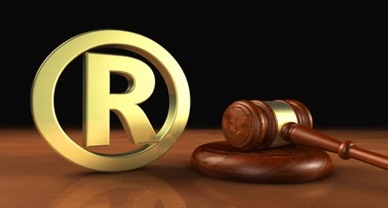Trademarking Numbers: Understanding The Numeral Trend
Introduction
Brand owners and traders have long embraced numeral creativity to captivate consumers. Names like 7-eleven, 5 Star, 7Up, and 99acres resonate with consumers, widely reflecting the innovative use of number as brand identities. However, the extent of protection and applicable principles of trademark law that surround the numeral trademark takes center stage in the discussion.
Numbers inherently have no meaning and are mere abstract symbols used for representation of quantity or values. They only have significance owing to acquired human interpretation and cultural associations and their significance differs based on industries. They are mainly functional and, therefore, protection to standalone numeral marks has been a path of careful deliberations of plethora of surrounding factors by registries and courts. Additionally, various judgements by courts have provided no straight jurisprudence regarding protection of numeral trademarks.
The statute leaves no ambiguity in including numerals as valid trademarks when they are standalone or used in combination and are included under the definition of a mark under Section 2(1)(m) of the Trade Marks Act,1999. The definition is inclusive of numerals and makes it clear that such numeral marks can serve the purpose of identification of goods and services. However, protection to numbers have differed. Despite the clear inclusion of numbers as marks within the statute, practical considerations make it a slippery domain. Numeral trademarks are not considered prima facie distinctive or capable of distinguishing goods or services as they have functional meaning in various industry practices like representation as strength of alcohol content.[i] Cases and registrations indicate that registrability or successful enforcement of rights can happen only if such marks have acquired distinctiveness through use or where numerals are used as a fanciful device or when the numeral is used in a descriptive sense and not as a trademark.[ii] Thus, a study of various case laws involving numeral trademarks shows the variety of factors courts take into consideration to gauge the validity of such marks or to establish a successful case for infringement.
Arbitrary numbers
The level of protection and enforcement rights for a numeral trademark in a particular industry depends on its degree of arbitrariness within that industry. The more arbitrary the numeral trademark is, the stronger protection it receives. As a result, it gains enhanced enforcement rights, allowing the trademark owner to take stronger legal action for use of similar numbers as evident in the case of Alphavector India Pvt. Ltd. vs. Sach Industries[iii]. In the legal battle between 99 vs. 91, the plaintiff, owning rights in the numeral mark “99”, successfully restrained the defendant from using “91” numeral marks. Being the industry for bicycles and related accessories, the Court ruled that use of “99” is arbitrary in this industry and accorded greater protection to plaintiff by ruling the suit in their favor thereby restricting the use of mark of “91”.
In a slightly contrasting judgment of Mona Aggarwal & Another vs. Glossy Colour & Paints Pvt. Ltd. & Another[iv], the Court allowed numeral mark “6006” to exist as against “1001”. The plaintiff had long held rights to the mark “1001” for goods such as paints and distemper since 1946. Although the use of “1001” was considered arbitrary within the industry, the Court allowed the defendants to use “6006” on similar goods due to distinct differences in packaging, color scheme, and overall layout.
In Vrajlal Manilal & Co. vs. Adarsh Bidi Co.[v], involving a dispute between the marks “22” and “122” for bidis, the Court granted protection to the plaintiff using the mark “22” on its bidi products since decades. The Court reasoned that bidis are primarily consumed by the lower strata of the community which comprises mostly of the illiterate or semi-illiterate. Thus, it restrained the defendants from using the mark “122” on their bidi products. Therefore, even the use of arbitrary numeral marks comes with plenty of accompanying factors which influence their use as trademark.
Strength of the number
Cardinal numbers notoriously lack distinctiveness by their inherent feature of being a cardinal number. Such numbers are usually used as symbols indicative of quality or other characteristics such as quantity, strength, power, etc. Thereby, greater the numeral combination from two to three and thereon, greater is the level of protection as trademark.[vi] The Court, in Jagan Nath Prem Nath vs. Bhartiya Dhoop Karyalaya[vii], protected the plaintiff’s right in the numeral mark “555” in relation to agarbattis by refraining the defendant from using a similar mark.
[image Sources : Shutterstock]
Similarly, in Shaw Wallace & Co. Ltd. and Anr. vs. Superior Industries Ltd.[viii], the Court ruled in favor of the plaintiff by enforcing its right in the numeral mark “5000”. Although the Court relied heavily on the reputation of the plaintiff, it recognized and enforced the plaintiff’s exclusive right to utilize the numeral “5000” in association with its products. Further, in Carlsberg India Pvt. Ltd. & Another vs. Radico Khaitan Ltd. & Another[ix], in the battle for numeral mark “8”, the Court drew the distinction between the Jagan Nath case and Shaw Wallace cases with the Radico case based on the strength of the number thereby implying the significance and greater protectability of higher combination of numbers as trademarks. The distinction highlights the role of the strength of the number in assessing the level of protection afforded to numeral marks in trademark disputes.
Descriptive use of numbers
The descriptive use of a numeral on the label of goods or services is the fair use defence that is often invoked in infringement and passing off suits. When a numeral is employed in a manner as description of either quality, quantity or other characteristics, it is construed as a non-trademark use of a numeral and is permitted. For instance, use of a numeral to denote the strength of alcohol content on the label of bottle is a fair use. This recognizes the practical need to provide relevant information to consumers while allowing fair use of numerals.
Three tests were evolved in the case of Radico to ascertain whether use of numeral is non-trademark or not. First, whether the numeral indicates any functionality of the product; second, the placement of numeral on the label i.e., whether the numeral appears in a manner of speaking on the label or has been given undue prominence so as to appear as a trademark; and third, use of any other mark alongside the numeral which is intended to be used as a trademark. Thus, a cumulative application of this test would be determinative in an infringement or passing off suit for a numeral mark and the use of a numeral as a non-trademark will be allowed.
Conclusion
The commonality in analysis is clear that numeral marks can be trademarked and effectively protected against infringement and passing off, but they lack inherent distinctiveness. The successful enforcement of rights or registrability will depend largely on the arbitrariness of the number, its use with accompanying marks, the strength of the number and other factors that are also considered in assessing the degree of similarity in usual trademark cases.
Author: Harshita Rawat, A Student at Institute of Law, Nirma University, Ahmedabad, in case of any queries please contact/write back to us at support@ipandlegalfilings.com or IP & Legal Filing.
[i] P. Narayanan, Law of Trade Marks and Passing Off, 6th Edition
[ii] https://www.wipo.int/edocs/pubdocs/en/intproperty/489/wipo_pub_489.pdf
[iii] CS(COMM) 691/2022
[iv] FAO(OS) 572/2015 & CM 23119/2015
[v] 1995 (15) PTC 88 (DEL)
[vi] Supra, at 1.
[vii] AIR 1975 Delhi 149
[viii] 2003 (27) PTC 63 (DEL)
[ix] FAO(OS) 549 of 2011, 567 of 2011



